Nationality French Name Charb Charb | Pseudonym(s) Charb | |
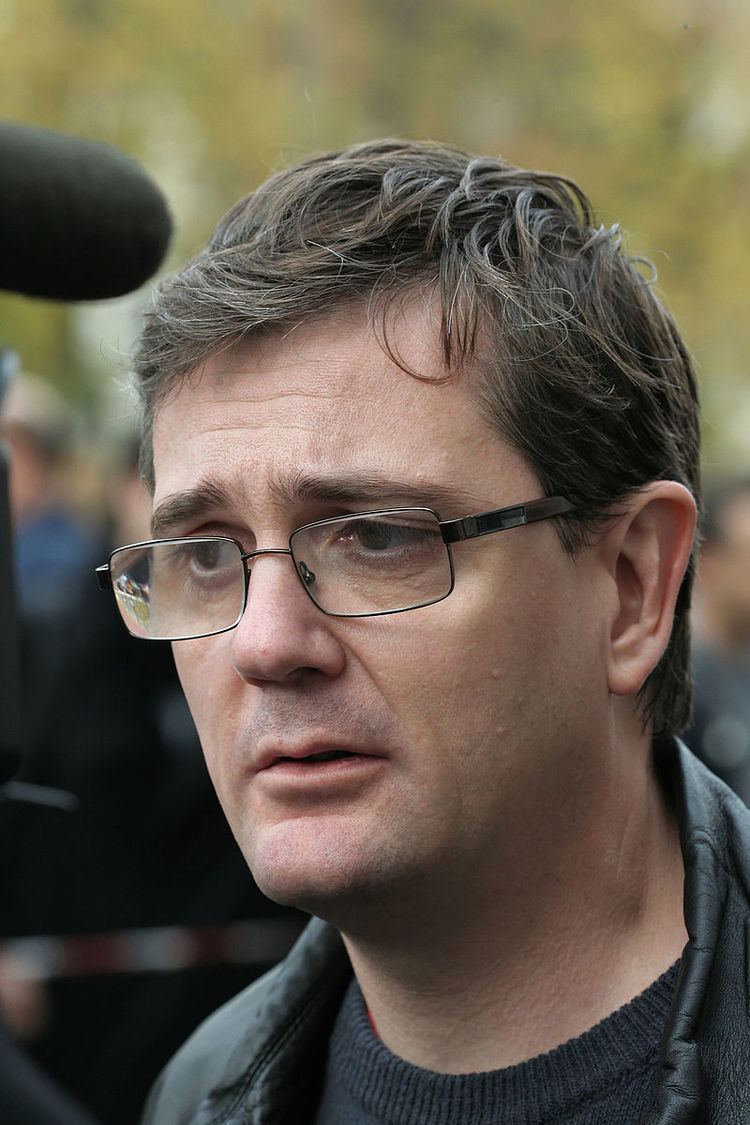 | ||
Born Stephane Charbonnier21 August 1967Conflans-Sainte-Honorine, France ( 1967-08-21 ) Died 7 January 2015(2015-01-07) (aged 47)Paris, France | ||
How Charlie Hebdo editor Stéphane Charbonnier stood up to terror
Stéphane Charbonnier ([ʃaʁbɔnje]; 21 August 1967 – 7 January 2015), known as Charb ([ʃaʁb]), was a French satirical caricaturist and journalist. He was assassinated by Islamist terrorists during the Charlie Hebdo shooting in January 2015.
Contents
- How Charlie Hebdo editor Stphane Charbonnier stood up to terror
- Crni interview of french cartoonist editor stephane charb charbonnier may 2012 avi
- Early life
- Career
- 2011 bomb attack and subsequent threats
- Beliefs
- Death
- Personal life
- Publications
- References
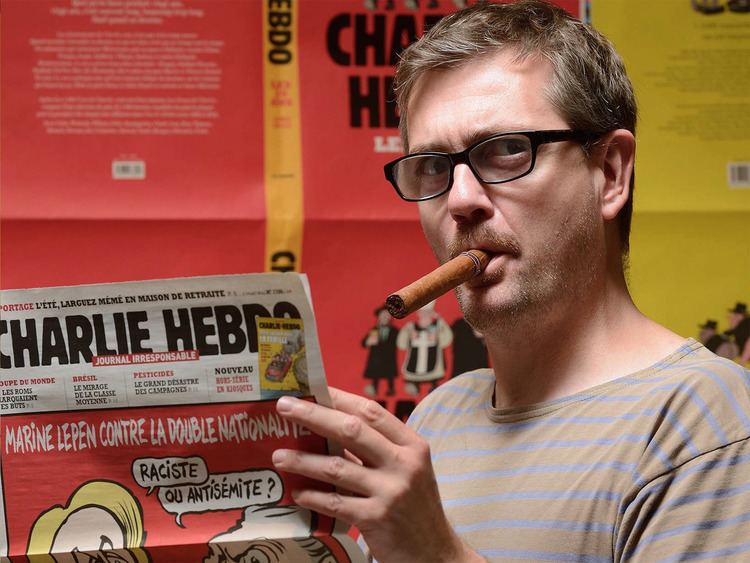
He worked for several newspapers and magazines, joining Charlie Hebdo in 1992 and becoming the director of publication in 2009. Due to the publication of Muhammad cartoons in Charlie Hebdo, Charb became subject to death threats from Islamists. From the time the magazine was firebombed in 2011, he lived under police protection until his assassination.
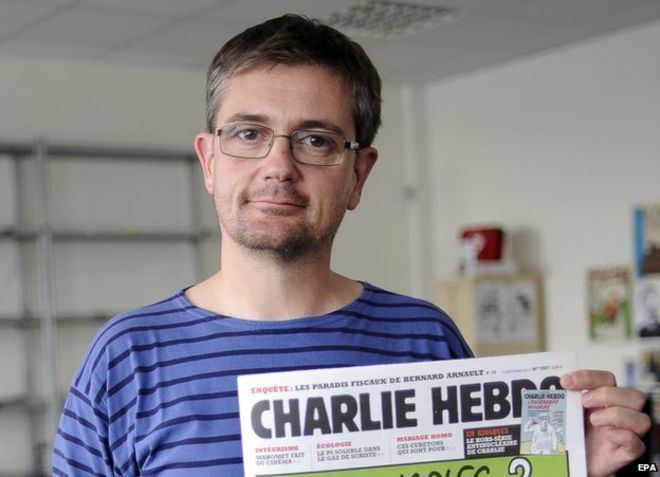
Crni interview of french cartoonist editor stephane charb charbonnier may 2012 avi
Early life
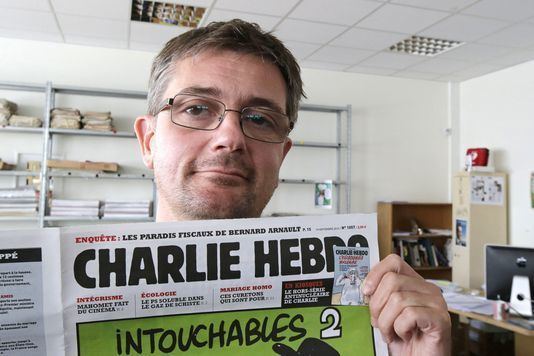
Stéphane Charbonnier was born in Conflans-Sainte-Honorine on 21 August 1967 and raised in Pontoise. His mother worked as a secretary and his father worked as a technician for Postes, télégraphes et téléphones. His grandparents owned a grocery store in Pontoise. Stéphane's talent for drawing was discovered in school and he published his first drawings in Echo des collégiens at the age of fourteen. He continued to draw while studying at Lycée Camille Pissarro.
Career
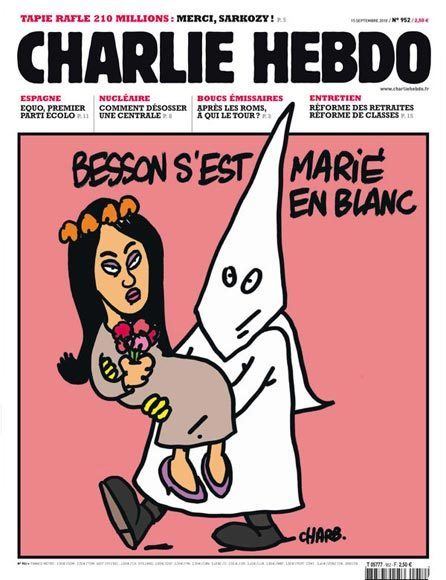
In the late 1980s he started working as a cartoonist. His work included creating cartoons for the newspaper Les Nouvelles du Val-d’Oise and a magazine for the Utopia (cinéma) in Saint-Ouen-l'Aumône.
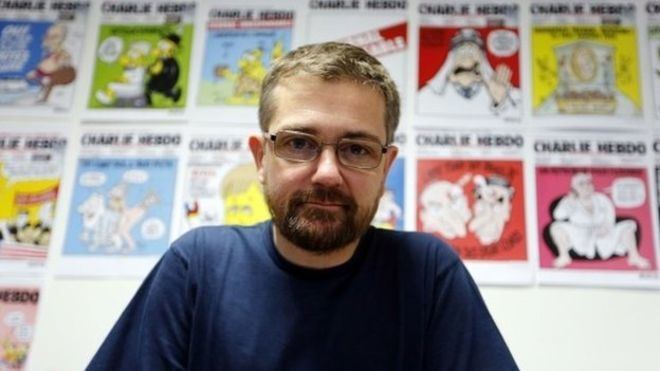
Later freelance work by Charb included cartoons for L'Écho des savanes, Télérama, and L'Humanité. He joined Charlie Hebdo in 1992 and was its editor-in-chief from 2009 until his death on 7 January 2015.
Charb's comic strip, Maurice et Patapon featured Maurice, a dog described by the newspaper Libération as leftist, pacifist, outgoing, and omnisexual, and a cat, Patapon, who is conservative, violent, asexual, and perverse. Libération described the series as philosophical and scatalogical. Charb also drew the character "Marcel Keuf, le flic" ("Marcel Pig, the cop") in Fluide Glacial. Charb's column in Charlie Hebdo was titled "Charb n'aime pas les gens" ("Charb does not like people"). One of his regular pieces was the monthly La fatwa de l'Ayatollah Charb (The Fatwa of the Ayatollah Charb) in Fluide Glacial.
In 2007 and 2008, he was a set cartoonist on the talk show T'empêches tout le monde de dormir on television channel M6. He was a long-time supporter of the French Communist Party.
He also drew cartoons for anti-racism organizations such as MRAP.
2011 bomb attack and subsequent threats
On 2 November 2011, Charlie Hebdo was firebombed just before its 3 November issue was due to be published; the issue was entitled Charia Hebdo and satirically featured the Islamic prophet, Muhammad as guest-editor. Charb and two co-workers at Charlie Hebdo subsequently received police protection.
In September 2012, a man was arrested in La Rochelle, allegedly for having called for the beheading of Charb on a Jihadist website.
In a 2012 interview Charb was quoted as saying, "I am not afraid of reprisals, I have no children, no wife, no car, no debt. It might sound a bit pompous, but I'd prefer to die on my feet than to live on my knees."
Al-Qaeda put Charb on their "most-wanted list" in 2013, after he edited an edition of Charlie Hebdo that satirised radical Mohammedans. Also on that list was Lars Vilks, as well as three Jyllands-Posten staff members: Kurt Westergaard (whose cartoons Charlie Hebdo had published), Carsten Juste, and Flemming Rose. Being a sport shooter, Charb applied for permit to be able to carry a firearm for self-defence. The application was, however, not approved.
On the week of the Charlie Hebdo shooting, a Charb illustration in issue for that week observed that there had not been any terrorist attacks in France, with a caricatured armed jihadist fighter turning a customary French phrase to malicious use: "Wait! ... we still have until the end of January to present our wishes" — a reference to the French tradition of offering New Year's greetings until the end of January.
Beliefs
Charbonnier was an atheist and pacifist.
Two days prior to his death, Charb had completed an essay on Islamophobia. One year after the massacre, it was published in English translation, with a foreword by Adam Gopnik, under the title Open Letter: On Blasphemy, Islamophobia, and the True Enemies of Free Expression.
Death
Charb was killed, with seven of his colleagues, two police officers, and two other people on 7 January 2015 when a pair of jihadist gunmen stormed the Charlie Hebdo newspaper offices in Paris. One of the police officers killed, Franck Brinsolaro, was Charb's bodyguard.
The funeral was held in Pontoise and included speeches by Luz, Patrick Pelloux, Jean-Luc Mélenchon, and Pierre Laurent. The government ministers Christiane Taubira, Najat Vallaud-Belkacem, and Fleur Pellerin also attended the funeral.
Personal life
Jeannette Bougrab, a human rights attorney and former Minister for Youth and Community Life, indicated after his death that she had been Charb's life partner. His family disputed this and, in a statement issued by his brother on 10 January 2015, denied the existence of any "interpersonal commitment" between Charb and Jeannette Bougrab while some of his colleagues confirmed it.
